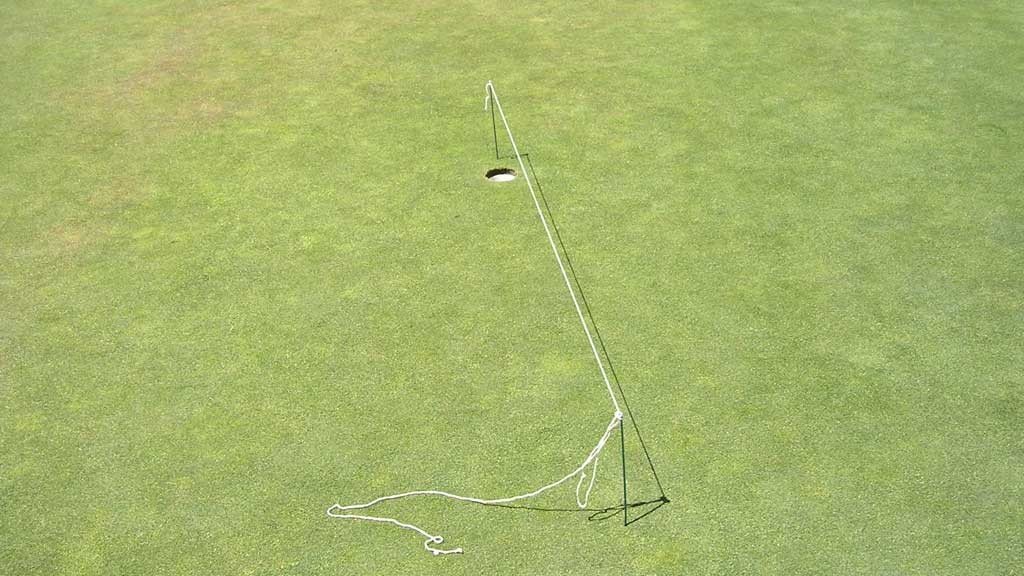Good putting is all about speed. True, you need to have the right line, but after a certain distance away from the hole, getting the line close enough is all you need to do. Getting the speed right is what makes the difference between two putts and three.
Many people think that speed is a matter of feel alone. You can see the line. The contours, or lack of them, are right there in front of you, but you have to feel speed. Not true. Speed is right in front of you, too, if you know how to look.
In addition to the length of the putt, there’s the height of the grass, the direction of the grain, the firmness of the green, the amount of moisture in the grass, and slope of the ground, that all affect how hard you will hit the putt. All these can be noticed and taken into account.
Your putter is a variable, too, There’s one place on the putterface to hit the putt, called the sweet spot, that allows your stroke to give you a predictable distance response. Many of the times that you left a putt short was not because you didn’t hit it hard enough. You had the right stroke but missed the sweet spot.
That said, there is a feel element to finding the right speed. You have to, through practice, know how hard to hit a putt that in general goes 20 feet, or 40 feet, or ten feet. These three basic strokes can then be modified when the length of the putt is different and other variables factor in.
But all this comes down to feeling what the right speed to hit this putt is. It doesn’t end with the calculation based on the physical variables. That calculation has to be translated into a feel that your body can use to hit the putt with the right force. How is this done?
It’s a mystery, really. Practice will help you get better at it, but feel is elusive on the course because it is affected by the condition of your mind. On some days you can be standing over a 35-footer and just know how hard to hit it. You’ve had days like that haven’t you?
But on other days the feeling doesn’t come and it’s just a guess. You’ve had days like that, too. Understand that you do have a feel for distance every day you play. On some days you just have to work harder to get it out.
When you can’t feel how hard to hit that 35-foot putt, move in closer to the hole until you find a range from which you do feel the speed. Maybe it’s half that distance. Let that feeling come through your mind into your body, and latch onto the confidence it creates. Then go back to your ball and look at the putt you face, with that feeling of confidence still in mind. The right force to put on the ball will come to you right away.
Finding the right speed begins with technical factors that are easily learned. What counts is the control you exercise over your mind to turn those factors into the correct physical movement. Once you know how to do this, every day on the green can be a good day.

